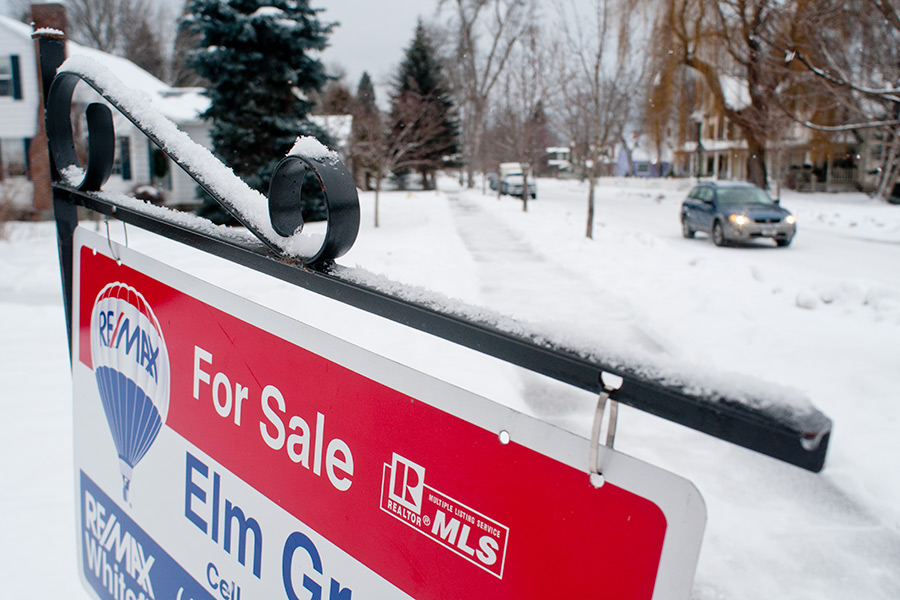It’s taken the better part of a decade, but the Flathead housing industry seems to be back on track after the recession caused a massive detour.
A total of 1,680 residential sales occurred in 2016, nearly identical to the 1,683 in 2015, and housing prices are near the same levels as 2007, according to Jim Kelley of Kelley Appraisal. The median price for a residential sale in Flathead County in 2016 hit $255,000, up from $242,500 the year before; the 2007 median price for a home was $250,000.
“Basically it took us 10 years to get back to where we were,” Kelley said last week.
Kelley was in the middle of preparing his annual report detailing the finer points of Flathead County’s real estate market, but he said many of the same trends from 2015 seemed present in 2016.
For instance, there’s an extremely tight inventory on houses in the $150,000 to $250,000 range, especially for properties in and near Whitefish and Kalispell. Conversely, the higher end of the market continues its slow thaw, still not performing at pre-recession levels. This is illustrated in the average price of residential sales in 2016, which is $326,715, compared to the average in 2007, which was $361,798.
Outside the cities, the county received a slight increase of septic permits, Kelley said, and subdivided lot availability in the county has increased.
“There’s just a huge inventory of small acreage lots outside the city,” Kelley said. “What there’s a shortage of is small building lots inside the city that have public water and public sewer.”
Amy Deaton, an owner at Deaton and Company Real Estate and the president of the Northwest Montana Association of Realtors, said the area’s listings have seen consistent shortages in the starter-home price range.
“I would love to have some more inventory to sell to people,” Deaton said. “Eighty-five to 95 percent of the sales volume in any given month (in the Multiple Listing Service or MLS) is typically below $400,000. We are lacking inventory in that price range.”
Deaton said it might be tempting to think the current market is as fast and loose as the pre-recession market, but there are significant differences this time around. Pricing, while hitting median 2007 levels, along with value, is not back to 2007 levels across the board, she said. Northwest Montana has distinct, hyper-local markets that have “trended very unevenly” since 2008.
Whether it’s a buyer’s or seller’s market depends on the location and the price range, she said, whereas back in the heady days of the early 2000s, markets were booming everywhere.
High-end sales at $600,000 and above continue a moderate, slower rebound, she said, but there’s almost no inventory for homes under $300,000 in Whitefish.
There’s also been a shift in property purchases, she said. During and directly after the recession, buyers could pick up a nice lot or parcel relatively inexpensively and build their own home.
“People can’t get that $35,000 or $40,000 lot and build their house and be under $300,000,” Deaton said. “Maybe they can, but it’s not as easy as it was 18 months or two years ago.”
The median price for residential land sales in 2016 stayed unchanged from 2015’s $80,000 level, and the sales were relatively static as well, with 486 in 2016 compared to 481 in 2015. The main difference is in the average price of land sales, which in 2016 was $133,104 compared to 2015’s $109,943, an increase of more than 21 percent.
Tony Giardina, who runs TL Custom Homes with his wife Lori and was president of the Flathead Builders Association through 2016, said the climate has shades of 2005 and 2006, but it’s definitely more buttoned up.
Builders are slammed with business, he said, but it’s been more measured, less frenetic.
“It’s the dead of winter right now, it’s crazy cold out, and we are still getting two to three calls for future work every week,” Giardina said last week.
TL Custom Homes typically builds residences priced at $400,000 and up, and Giardina said his customer base is largely from out of state and Canada. Business isn’t back to 2007 levels in this price range, but Giardina is still able to consistently employ 10 carpenters. He thinks he could find enough work to add on another 10 carpenters, but Giardina doesn’t want to expand so rapidly.
“The industry is super healthy,” Giardina said of construction. “There are a lot of companies that are struggling to find enough people to help, to work.”
But there are roadblocks already in sight for the real estate market, with affordable housing and workforce housing topping the list, Deaton said. The Federal Reserve has also already raised interest rates, with some inflation expected.
Buyers are trending toward newer homes, avoiding remodeling, Deaton said, and they’re more thoughtful all around than they seemed 10 years ago.
“I worry about (market) sustainability, but I will say that with the clients that we’ve worked with recently, even at the very high end, there’s more caution, there’s more care, there’s more concern,” Deaton said.
